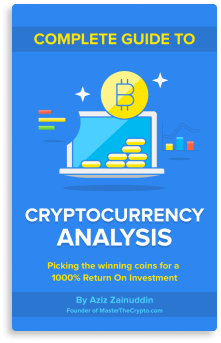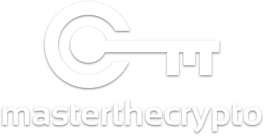Dream ICO Review: A comprehensive review and analysis on Dream ICO, which is set to lead the blockchain freelance market.
This represents the writer’s personal opinions and does not – in any way- constitute a recommendation of an investment or financial advice. Please assume caution when investing in cryptocurrencies and do so at your own risk, as it is extremely volatile and you can lose your money.
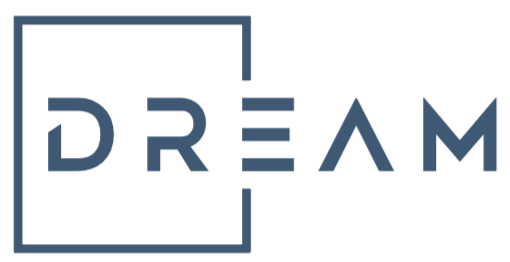
Overview
Dream is a marketplace for high-quality blockchain talent in the freelance market. Dream simplifies the project management process, providing an integrated solution for core business process that includes building the right team and managing project tasks.
Current Issues
Dream is conceived to solve the following problems:
- High Failure Rate of Projects: Start-ups tend to fail due to poor planning
- Hiring Scalability: One-to-one hiring may create inefficiencies that do not add value to the start-up projects.
- Verification Challenges: It is a challenge to establish the verification of freelancers due to the absence of a standard verification protocol
Applications
Dream’s ecosystem is as follows:

There are 4 main components in Dream’s ecosystem:
-
Dream Builder
Dream builder is the core of the ecosystem that guides the project decision process, acting as a personal project manager. The functionalities of Dream builder includes defining sets of required tasks, choosing and recruiting the right team mix, and managing the team. There are 3 main components of Dream builder:
- Dream AI: An Artificial Intelligence (AI) algorithm that creates and recommend the project’s task list. Dream AI programmed to continually learn both externally and internally) from the outcome of other projects, teams and the network’s community of experts.
- Dream Manager: A portal that manages all components of a project, integrating with leading collaboration tools to streamline the project workflows.
- Dream Knowledge: A web portal to train and feed Dream’s AI system.
-
Dream Reputation
Dream Reputation consolidates verification data related to the freelancers and their success rates from previous projects, creating a portable ranking mechanism that matches suitable freelancers using open-source intelligence from multiple blockchain ecosystems – like Ethereum and Rootstock. DREAM Reputation consolidates trust and expertise whilst ensuring portability and ownership of personal data.
-
Dream Talent
Dream Talent is the actual marketplace that provides high-end talent as advisors for short-term engagements, freelancers for longer-term projects, and gigs for rapid delivery.
(Read also: Crypto Beginners Guide: 5 Things Crypto Newbies Should Know)
Technology Breakdown
Dream’s AI-based platform is categorized into 3 main modules:
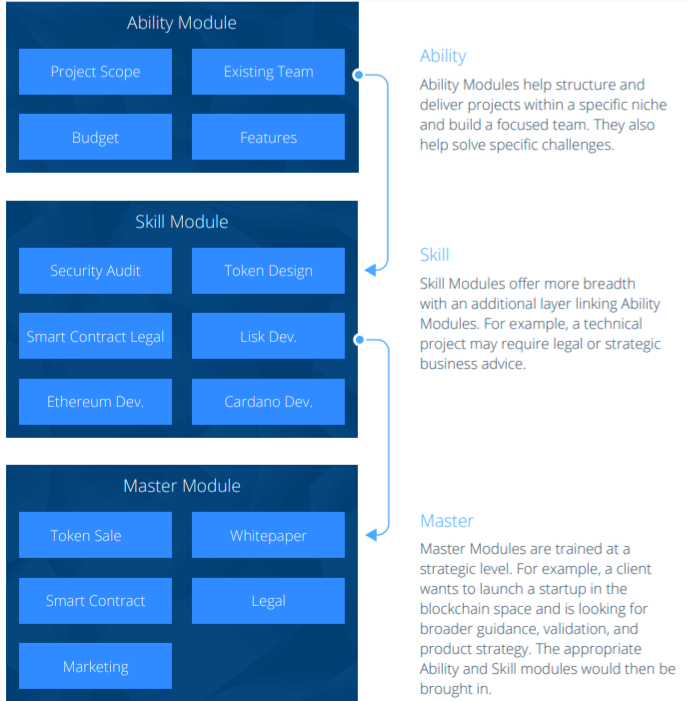
(See also: Analyzing Cryptocurrency Risk: Existing Coins vs ICO)
Unique Differentiator
- End-to-End Project Development Solution: Dream isn’t simply a marketplace to find freelancers; it is more of an enterprise resource planning (ERP) solution as it guides the decision-making process for the project management team. Traditional freelance platforms – like Upwork and Fiverr – and blockchain-based platforms – like Canya – focus only on connecting recruiters and freelancers, with no additional process thereafter.
Token Utility & Economics
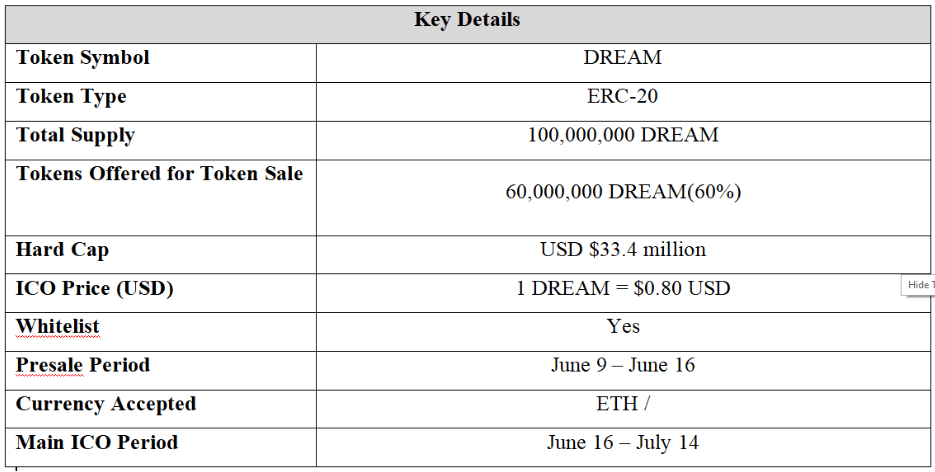
DREAM is the native token for Dream ecosystem that is ERC-20 compliant. DREAM is a utility token that has the following functionality:
- Purchase premium services
- Hire freelance talents
- Incentivizing community members for using and growing the platform
- Rewards for AI training
The supply of DREAM tokens is fixed at 100 million. Dream token can be purchased on the native Dream exchange using a debit/credit card, eliminating the reliance for users to acquire DREAM tokens from cryptocurrency exchanges. This will facilitate an easier onboarding process for users.
Although there’s a variety of use-cases for DREAM tokens, as of right now payments to hire freelancers can be done via fiat payments. There is no mention of how using DREAM tokens could be more advantageous than using fiat, such as through discount pricing. This could be disadvantageous since users would not want to go through an additional layer of process – of buying DREAM from an exchange and thereafter pay freelancers – if they can just easily pay using traditional methods of debit or credit cards. (See more: Coins, Tokens & Altcoins: What’s the Difference?)
Team

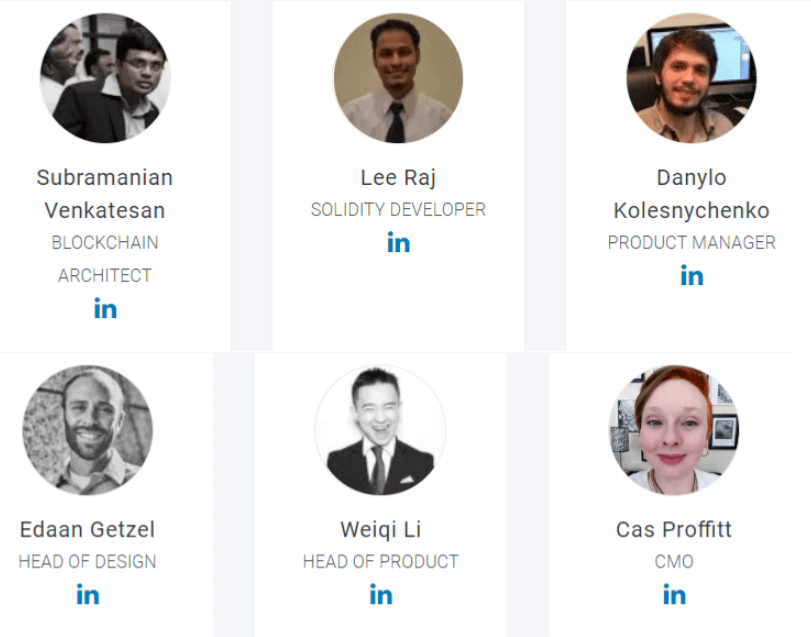

Dream has an extensive team, with 10 developers and 6 staff dedicated towards marketing and business development. Their development team is filled with experienced blockchain engineers. Dream’s blockchain architect – Subramanian Venkatesan – has contributed to Ethereum JS suite of projects.
The Founder and CEO – Richard Foster – has twelve years experience as a Cisco CCIE freelance network architect, with a deep knowledge of payment systems and online marketplaces. The Co-FOunder and CFO – Amy Diez – is a chartered ACCA accountant and a former Associate Director at KPMG London, with an expertise in economics.
Dream also has a strong advisor list, with the notable ones including Fabian Vogelsteller, who is an experienced Ethereum developer that has contributed to many open source projects including Ethereum’s Mist browser and the Ethereum Wallet. He is most well-known for proposing Ethereum’s ERC20 token standard alongside Vitalik Buterin.
(Read more: A Guide To Fundamental Analysis For Cryptocurrencies)
Roadmap
Here is Dream’s Roadmap:
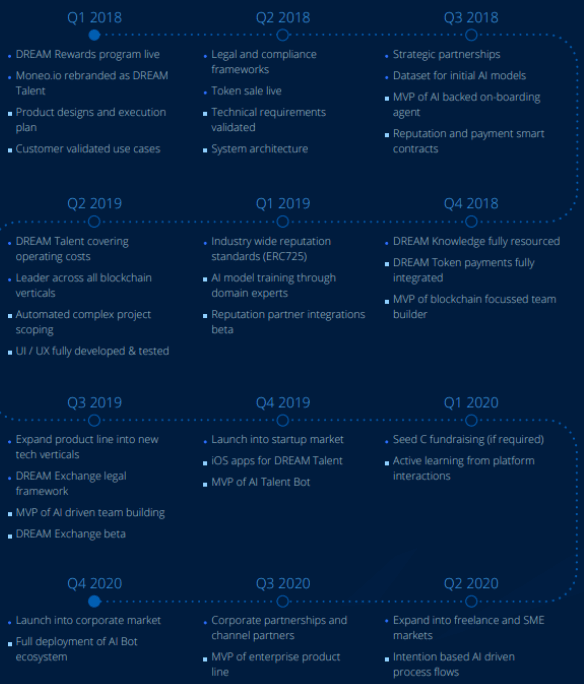
Dream has a well-thought-out roadmap which details the specificities of the project development. The minimum viable product (MVP) for the blockchain-based Team Builder is slated to be ready by the end of 2018, which is a relatively long wait for investors. It is important to note that Dream’s Talent platform – marketplace to source blockchain talent – is already functional.
Traction
Dream was originally called Moneo, a platform for high-quality, freelance talents specifically for the blockchain industry. Not only has the team and advisory board stayed on, Dream also retains the intellectual assets, payment systems and website of Moneo.
Key Statistics
Here’s a look at Dream’s key metrics:

Dream was incorporated at the start of January 2016 and has since grown well, with over $10 million worth of job postings and a sterling success rate of 97%. More importantly, Dream has clocked in a staggering 6,000+ development hours and has developed a custom Bitcoin Escrow Payment System that has been tested and proven.
Backers & Collaboration
Dream has been funded by two prominent Venture Capital funds;
- SOSV:An institutional VC ranked 4th largest blockchain-specific fund with over $300 million in AUM
- Artesian Venture Partners: An Australian venture capital firm with USD$255 million under management across three funds
Dream has also been chosen to be part of Chinaccelerator, Asia’s first mentorship-driven seed funding program for start-ups. It seems to be a great achievement since only 2% of projects are chosen to be part of the accelerator.
User Interface
Dream’s talent sourcing platform is already live. Users can already acquire blockchain talent on a freelance basis on Dream’s site. Here’s the layout of the platform:
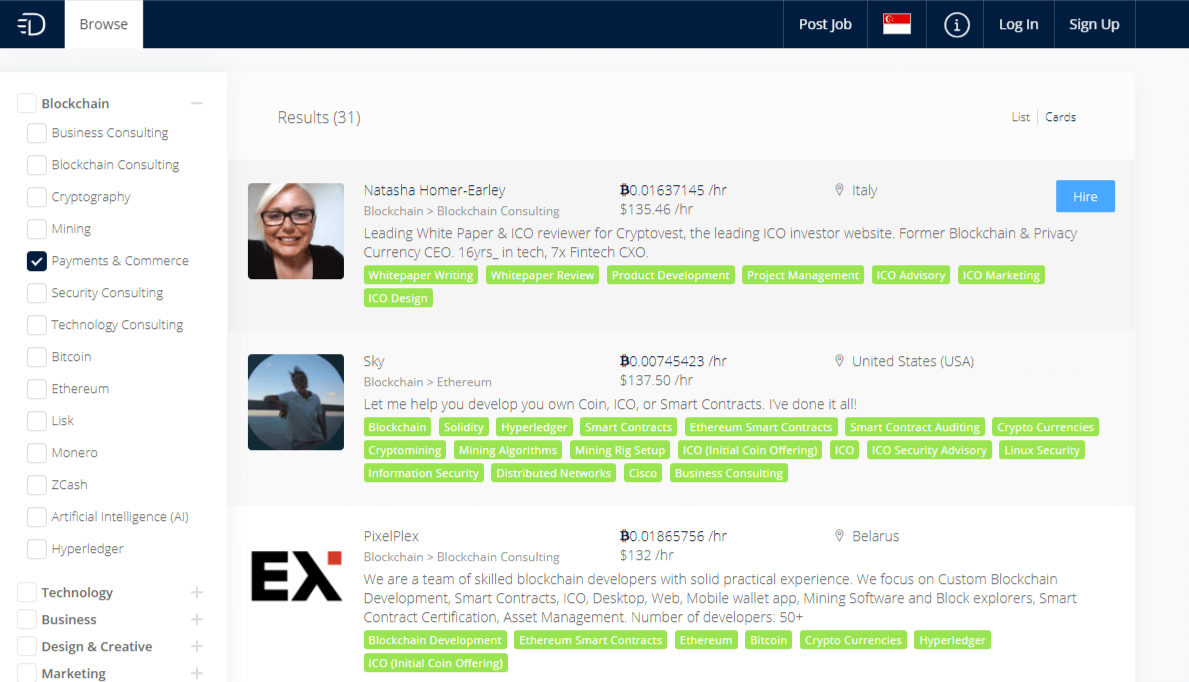
The user interface is clean and easy-to-use. There are 6 main categories of talents that includes: Blockchain, Technology, Business, Design & Creative, Marketing and Writing. Users can enter key search variables according to the price range and geographical locations of freelancers. Freelancers can be paid either in cryptocurrencies or fiat.
(See also: Evolution of Cryptocurrency: Replacing Modern Cash)
Strengths
- Detailed Roadmap & Financial Plan: Looking at Dream’s whitepaper, its roadmap is extensive and its financial plan even more impressive, categorizing and detailing every expense estimates complete with the time schedule. This is perhaps the most comprehensive financial plan we’ve come across, exuding professionalism and meticulous planning.
- Growth Potential: Given the infant industry, the infrastructure and talent for blockchain expertise far outstrip the demand for blockchain-specific skills. Additionally, the growing trend towards the freelancing puts Dream at the forefront of two growth segments: Blockchain and Freelance industry.
- Institutional Backing: Dream is part of a leading start-up accelerator in Asia and is backed by 2 venture capital fund. Institutional backing is always a positive sign of strong project viability and prospects.
- Working Product: Dream already possesses a talent-sourcing platform that connects hirers and freelancers. Dream has processed thousands of payments and has had twelve months of real-world validation and customer feedback.
- Qualified Team: Dream has a great mix of experienced blockchain developers, tech engineers and a healthy marketing team.
Weaknesses
- Formidable Competitors: In the conventional freelance space, heavyweights such as Fiverr and Upwork have already been established with great market share. Even assuming Dream’s dominance in the niche blockchain-freelance market, Fiver and Upwork could easily enter the space and offer blockchain talents, given its established infrastructure. In the blockchain space, there are already projects focusing on the freelance industry such as Canya and Ethearnel.
- No Mention of Fees: There is no indication of the possible range of fees of using Dream’s platforms, as the data is absent from the whitepaper. Therefore, no comparison between traditional freelance platforms or its blockchain equivalent can be made with regards to the cost-efficiency of Dream’s solution.
Summary
Dream is an ambitious project that not only aims to be the leading platform for accessing high-quality blockchain talent but more importantly, it is addressing a huge need (and an even greater need down the line when blockchain becomes mainstream) by offering an end-to-end enterprise resource planning platform leveraging on blockchain technology and artificial intelligence.
Verdict: Good Project
`(See also: Understanding Cryptocurrencies: Game of Thrones Edition)
Beneficial Resources To Get You Started
If you're starting your journey into the complex world of cryptocurrencies, here's a list of useful resources and guides that will get you on your way:
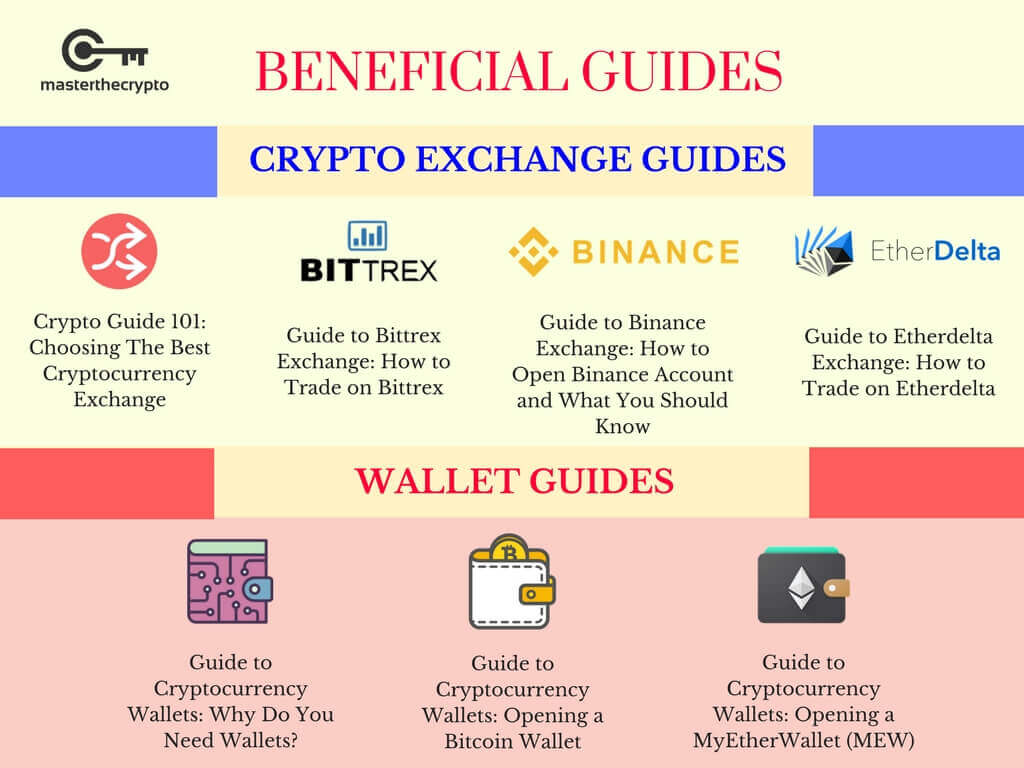
Trading & Exchange
- Crypto Guide 101: Choosing The Best Cryptocurrency Exchange
- Guide to Bittrex Exchange: How to Trade on Bittrex
- Guide to Binance Exchange: How to Open Binance Account and What You Should Know
- Guide to Etherdelta Exchange: How to Trade on Etherdelta
- Guide To Cryptocurrency Trading Basics: Introduction to Crypto Technical Analysis
- Cryptocurrency Trading: Understanding Cryptocurrency Trading Pairs & How it Works
- Crypto Trading Guide: 4 Common Pitfalls Every Crypto Trader Will Experience
Wallets
- Guide to Cryptocurrency Wallets: Why Do You Need Wallets?
- Guide to Cryptocurrency Wallets: Opening a Bitcoin Wallet
- Guide to Cryptocurrency Wallets: Opening a MyEtherWallet (MEW)
Read also: Guide on Privacy Coins: Comparison of Anonymous Cryptocurrencies and Guide To Cryptocurrency Trading Basics: Do Charts & Technical Analysis Really Work?
This represents the writer’s personal opinions and does not – in any way- constitute a recommendation of an investment or financial advice. Please assume caution when investing in cryptocurrencies and do so at your own risk, as it is extremely volatile and you can lose your money.
Get our exclusive e-book which will guide you on the step-by-step process to get started with making money via Cryptocurrency investments!
You can also join our Facebook group at Master The Crypto: Advanced Cryptocurrency Knowledge to ask any questions regarding cryptos!

I'm Aziz, a seasoned cryptocurrency trader who's really passionate about 2 things; #1) the awesome-revolutionary blockchain technology underlying crypto and #2) helping make bitcoin great ‘again'!
